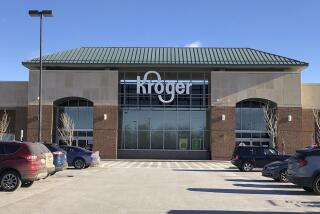The 1990s Will Experience a Surplus of Skilled Labor
Many economists have expressed fears that labor shortages--skilled labor shortages, in particular--will be serious in the next decade. They cite the slower growth of the labor force as the baby boom gives way to baby bust and that the pool of unemployed but employable older women is all but exhausted.
But a hard look at demand for labor at all skill levels and supply of suitably educated workers shows these fears to be unjustified.
First, consensus has it that in the 1990s real gross national product will probably grow at 2.4% per year, slower than the 2.9% of the 1980s, as emphasis on saving and debt reduction replace the borrowing and spending splurge of the 1980s. This will take some of the demand pressure off the labor market.
Where I depart from the consensus is over productivity growth. Look for significant improvement in the coming decade, especially in the services sector, where growth has been almost nonexistent for two decades. Most forecasters are silent on this subject. Apparently they haven’t thought about it or are convinced that the miserable pattern of the recent past will persist. But when more is produced per hour worked, fewer new employees are needed. Witness the 1950s and 1960s, when the sparse numbers of Depression babies were entering the work force. Economic growth was high, but no labor shortages existed because productivity growth was strong.
Service industry productivity rose a scant 0.5% per year in the 1970s and 1980s but is expected to grow 1.5% annually in this decade because of new competitive pressures. With global competition, industries such as banking and insurance face the same direct competition from abroad that forced U.S. manufacturers to raise their productivity in the 1980s.
And manufacturers are pressed to find new ways to reduce costs to remain competitive and therefore are insisting on lower-cost contracts from suppliers of such services as employee training, medical and computer services. Such services account for 30% of total manufacturing costs--the same proportion as direct labor.
Service firms stand to gain major benefits from new, labor-saving technology in office automation and information management. The result will be fewer new jobs but higher education levels required, and that has fueled the fears of skilled labor shortages.
Indeed, the demand growth for skilled labor in the 1990s will far outstrip the modest growth expected in administrative support services and blue-collar workers, and the demand for low-skilled jobs such as equipment operators and private household personnel is expected to shrink. In fact, based on an analysis of labor demand by occupation and education, jobs requiring four or more years of college will grow at a 1.5% annual rate from 1988-98, almost twice the rate for all jobs.
Fortunately, the educational attainment level of the work force will rise rapidly in the 1990s. Workers leaving the labor force in the next decade typically have considerably less education than the new entrants. In 1988, for example, 13.5% of the male population 60 or older had four or more years of college, compared to 24.6% of the 25-to-34 age group.
Some may argue that although today’s retirees lack college educations, they are as well educated as graduates of today’s “diploma mills.” On balance, I disagree. Most colleges impart genuine skills to their graduates, and, crucially, young people entering the labor force over the next 10 years will have one great advantage over retirees: They will have greater facility with the new computer-related technologies that are becoming essential in most workplaces.
There will be no shortage of labor in the aggregate; the overall unemployment rate is forecast to rise from 5.5% in 1988 to 9.3% by 1998. More specifically, there will be no shortage of skilled labor in the 1990s: The unemployment rate for those with four or more years of college may rise from 1.8% in 1988 to 9.8% by 1998--a rate exceeding the overall unemployment rate.
Even more dramatic, the unemployment rate for those with one to three years of college will skyrocket from 3.8% in 1988 to 20.6% in 1998, unless many of those people accept jobs for which they are overqualified. In contrast, the unemployment rate for those with a high school degree will change very little, rising from 5.5% in 1988 to 6.3% in 1998.
For unskilled jobs, the story is, ironically, bright, largely because of the declining number of low-skilled workers as increased numbers seek more education. The surplus of workers with less than a high school education--a group with an 11.7% unemployment rate in 1988--will disappear, and a shortage of unskilled labor could actually result by 1998. But that will probably be alleviated as more educated people are forced to take lower-skilled jobs.
On the whole, then, the labor market outlook for the decade ahead is characterized by growing surpluses and little possibility of the skill shortages that have worried many economists. Such a labor market will assure only modest pay increases the next several years, and that will provide a bulwark against the renewal of any wage/price spiral. The combination of accelerated productivity growth, modest pay increases and resultant low inflation should substantially strengthen U.S. competitiveness.
More to Read
Inside the business of entertainment
The Wide Shot brings you news, analysis and insights on everything from streaming wars to production — and what it all means for the future.
You may occasionally receive promotional content from the Los Angeles Times.






